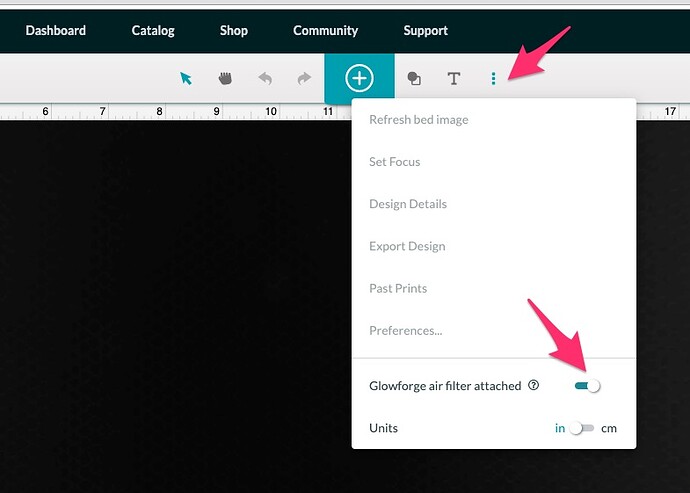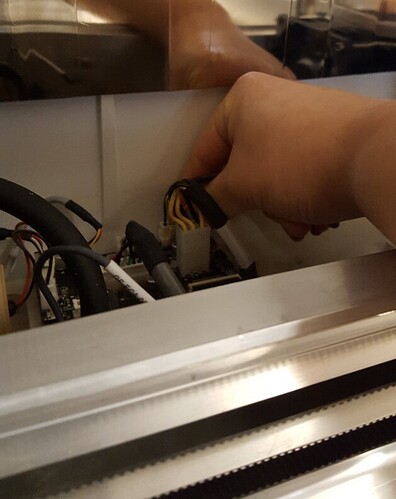Hello, @brok09 I am so sorry to hear bout the exhaust fan trouble you are having. It looks like you’re working way through some of the advice from our forum members. If you wanted to continue going this route I also recommend checking out the Beyond the Manual section of our community. Note that advice in this section is unsupported and is not reviewed by Glowforge.
There are still a few things I can check for you if you’d like to go the official route.
The cable for the fan could have been jostled and unplugged during cleaning. Please check the fan cable by doing the following:
1. Turn off your Glowforge.
2. Open the lid.
3. Gently roll your laser arm to the front of your unit.
4. Look for a black cable with a white connector.

5. If the connector is plugged into the board, wiggle it very gently to make sure it is secure. If it is, skip the next steps, and let me know that it was plugged in properly.
6. If the connector is unplugged or unsecured, locate the clip on the connector.
7. Then, gently plug it into the board as shown in the photo. The clip should face towards the center of the bed of the unit.
8. Close the lid, turn your Glowforge back on, and repeat the steps for the test print we did in the last message.
9. Check if the fan spins up during the test.
Lastly, You can test if your Glowforge is functioning properly using the following test.
1. Remove any material from the bed, leaving the crumb tray
2. Disconnect the exhaust hose
3. Use the fan maintenance page to turn on the fans in your Glowforge
Go to https://app.glowforge.com/maintenance/fan and follow the instructions to proceed. You will not need the degreaser.
Click the ‘Start Fan’ button and allow the fans to run
You do not need to follow the rest of the “Fan Cleaning” instructions to move the Glowforge outside or use degreaser.
Click ‘Finish’ to exit fan cleaning mode
4. Use a lit candle to determine if air is moving into or out of the seams along your Glowforge by holding it near the edges of the front door, lid, and the bottom corner on the front right side. If you see that the flame / smoke is being drawn towards the seams, that’s an indication that your Glowforge exhaust is functioning properly. If air is blowing out of those seams, pushing the flame / smoke away from the unit, it indicates a problem with the exhaust system.
Let me know how it goes and I will be happy to help!



